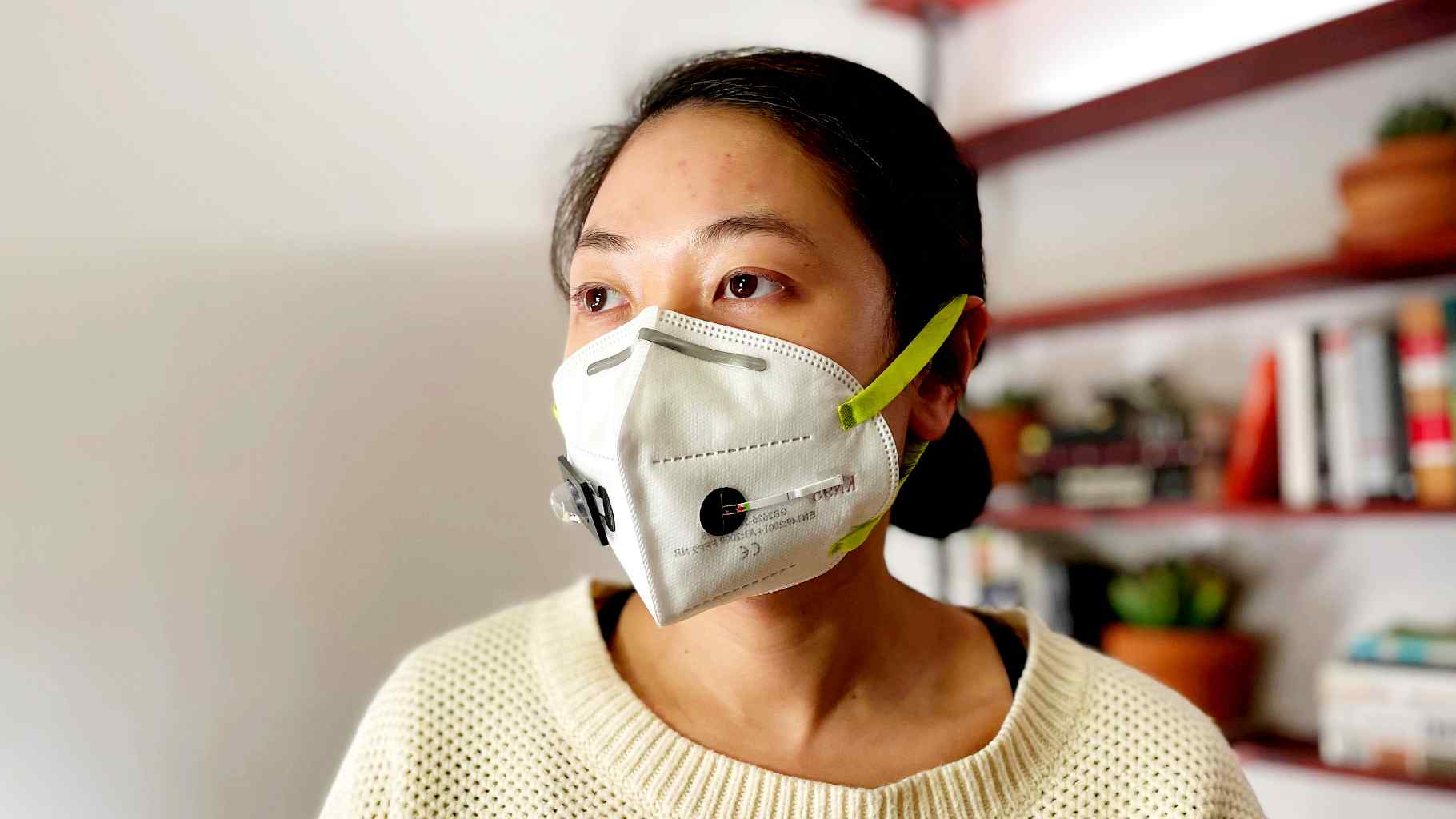MIT mask study: Engineers at MIT and Harvard University have designed a novel face mask that can diagnose the wearer with Covid-19 within about 90 minutes.
The masks are embedded with tiny, disposable sensors that can be fitted into other face masks and could also be adapted to detect other viruses.
The paper explaining the invention appeared today in Nature Biotechnology.
Sensors in masks, clothing, and more
“This test is as sensitive as the gold standard, highly sensitive PCR tests, but it’s as fast as the antigen tests that are used for quick analysis of Covid-19,” said the study’s co-author Peter Nguyen.
The sensors are based on freeze-dried cellular machinery that the research team has previously developed for use in paper diagnostics for viruses such as Ebola and Zika.
In the new study, the researchers showed that the sensors could be incorporated into not only face masks but also clothing such as lab coats.
This potentially offers a new way to monitor health care workers’ exposure to a variety of pathogens or other threats.
Freeze-dried sensors for a diagnostic face mask
The face mask sensors are designed so that they can be activated by the wearer when they’re ready to perform the test, and the results are only displayed on the inside of the mask, for user privacy.
To produce their diagnostic face mask, the researchers embedded freeze-dried sensors into a paper mask.
The freeze-dried components are surrounded by silicone elastomer.
The sensors are placed on the inside of the mask, so they can detect viral particles in the breath of the person wearing the mask.
The mask also includes a small reservoir of water that is released at the push of a button when the wearer is ready to perform the test.
This hydrates the freeze-dried components of the SARS-CoV-2 sensor, which analyzes accumulated breath droplets on the inside of the mask and produces a result within 90 minutes.
Prototype from MIT mask study also works for influenza, Ebola, and nerve agents
The prototypes developed in this study have sensors on the inside of the mask to detect a user’s status, as well as sensors placed on the outside of garments, to detect exposure from the environment.
The researchers can also swap in sensors for other pathogens, including influenza, Ebola, and Zika, or sensors they have developed to detect organophosphate nerve agents.
“Through these demonstrations, we have essentially shrunk down the functionality of state-of-the-art molecular testing facilities into a format compatible with wearable scenarios across a variety of applications,” Soenksen says.
Ideal for first responders, health care, and military
“This technology could be incorporated into lab coats for scientists working with hazardous materials or pathogens, scrubs for doctors and nurses, or the uniforms of first responders and military personnel who could be exposed to dangerous pathogens or toxins, such as nerve gas,” said co-author Nina Donghia.
The researchers have filed for a patent on the technology and they are now hoping to work with a company to further develop the sensors.
The face mask is most likely the first application that could be made available, said co-author James Collins.
“I think the face mask is probably the most advanced and the closest to a product.”
“We have already had a lot of interest from outside groups that would like to take the prototype efforts we have and advance them to an approved, marketed product,” he says.
“We’ve demonstrated that we can freeze-dry a broad range of synthetic biology sensors to detect viral or bacterial nucleic acids, as well as toxic chemicals, including nerve toxins.”
“We envision that this platform could enable next-generation wearable biosensors for first responders, health care personnel, and military personnel,” said Collins.
Study details
Article: “Wearable materials with embedded synthetic biology sensors for biomolecule detection“
Authors: Peter Q. Nguyen, Luis R. Soenksen, Nina M. Donghia, Nicolaas M. Angenent-Mari, Helena de Puig, Ally Huang, Rose Lee, Shimyn Slomovic, Tommaso Galbersanini, Geoffrey Lansberry, Hani M. Sallum, Evan M. Zhao, James B. Niemi & James J. Collins
Published in: Nature Biotechnology, June 28, 2021
DOI: 10.1038/s41587-021-00950-3
Photo: Wyss Institute at Harvard University, CC BY-NC-ND 4.0 license
Related: Researchers are designing a new antiviral face mask that sanitizes the wearer’s exhaled air, making the wearer less infectious to others.

